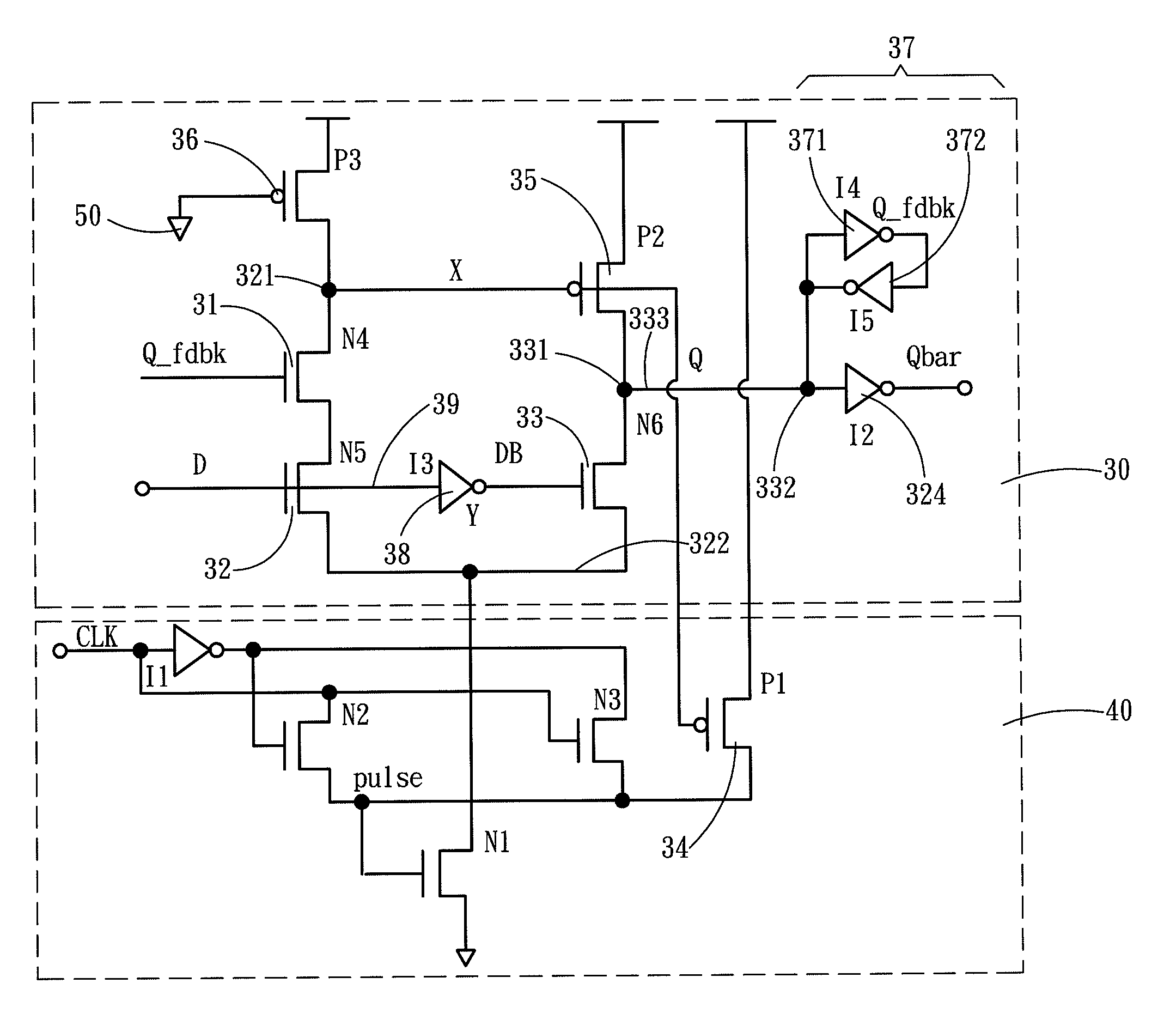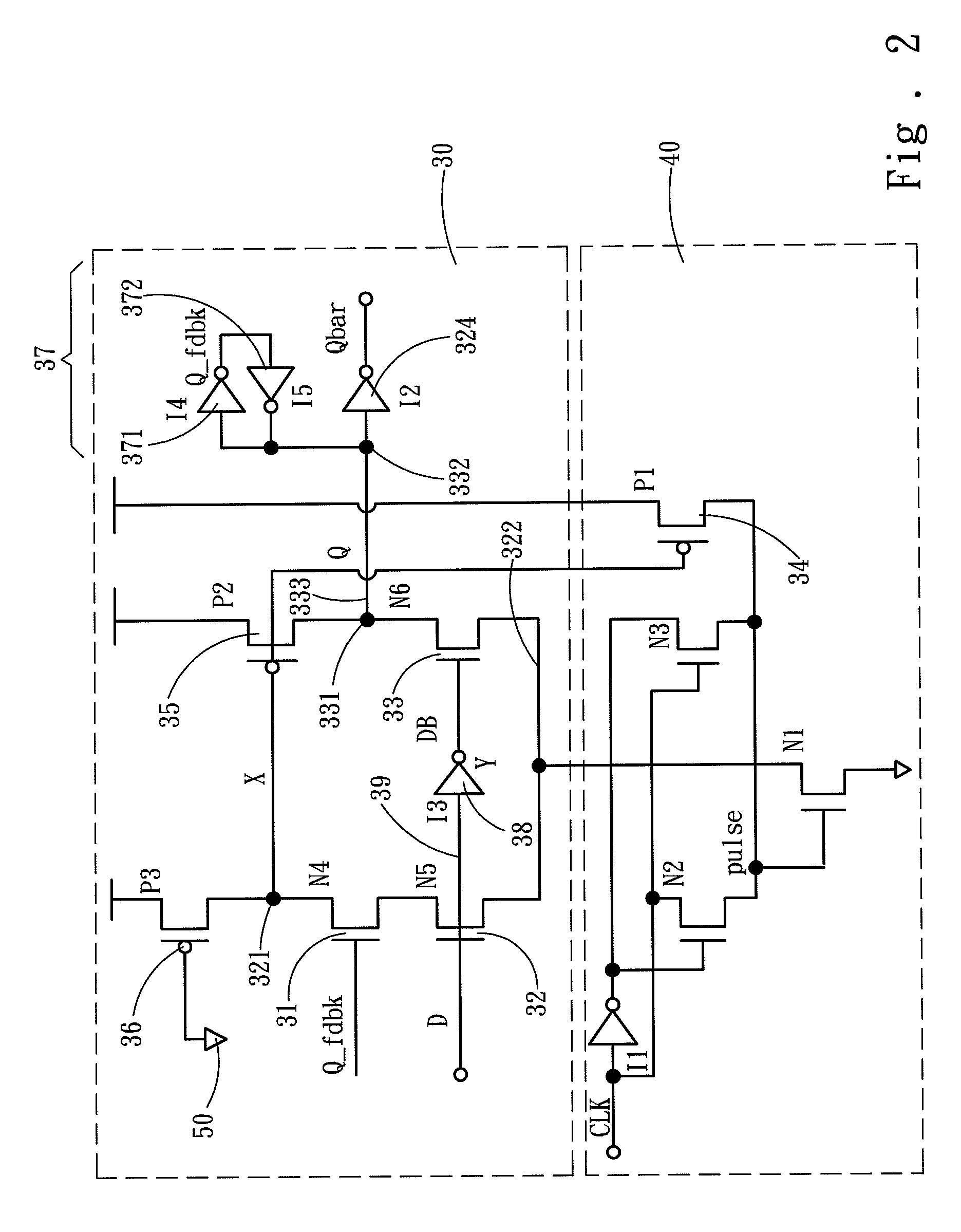Low power pulse-triggered flip-flop
a low-power, pulse-triggered technology, applied in pulse generators, pulse techniques, electrical equipment, etc., can solve the problems of increased power loss, flip-flops used in high-order system circuits that do not maintain a constant triggered operation, and increase the total leakage power, so as to reduce circuit power consumption, shorten discharge routes, and increase processing speed
- Summary
- Abstract
- Description
- Claims
- Application Information
AI Technical Summary
Benefits of technology
Problems solved by technology
Method used
Image
Examples
Embodiment Construction
Refer to FIG. 1 and FIG. 2. The low power pulse-triggered flip-flop according to the present invention comprises a latch 30 containing a first conductive line 10 and a first connection point 20 and a pulse generator 40 linking to the latch 30. The pulse generator 40 includes a first N-transistor 41, a second N-transistor 42, a third N-transistor 43, a first P-transistor 34 and a first inverter 46. The first N-transistor 41 has a gate, a first end and a second end. The first end of the first N-transistor 41 is connected to the first connection point 20. The gate of the first N-transistor 41 is connected to the first conductive line 10. The second end of the first N-transistor 41 is connected to a ground 50.
The second N-transistor 42 has a gate, a first end and a second end. The second end of the second N-transistor 42 is connected to the first conductive line 10.
The third N-transistor 43 has a gate, a first end and a second end. The second end of the third N-transistor 43 is connecte...
PUM
 Login to View More
Login to View More Abstract
Description
Claims
Application Information
 Login to View More
Login to View More - R&D
- Intellectual Property
- Life Sciences
- Materials
- Tech Scout
- Unparalleled Data Quality
- Higher Quality Content
- 60% Fewer Hallucinations
Browse by: Latest US Patents, China's latest patents, Technical Efficacy Thesaurus, Application Domain, Technology Topic, Popular Technical Reports.
© 2025 PatSnap. All rights reserved.Legal|Privacy policy|Modern Slavery Act Transparency Statement|Sitemap|About US| Contact US: help@patsnap.com



